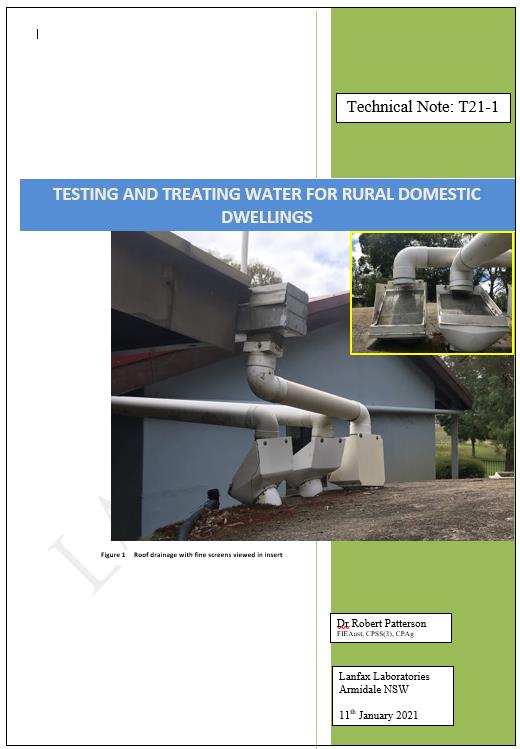DOMESTIC DRINKING WATER
Introduction: You may rely upon the collection and storage of rainwater as your only water supply for the household, water for drinking, showers, cooking, clothes washing and some gardening. Not everyone has access to a municipal treated water scheme. Rainwater is usually colourless and clear depending upon where you live.
Rain may have salt sea spray included if you live very close to the coast, or dust if you live inland. Rain water always has dissolved carbon dioxide that makes the rain fairly acid (pH <7).
Acid rain is used to refer to rain that has captured sulphur dioxide from chemical processes and may have a very low pH (<4.5). Water at this low pH is very corrosive to metals and some stonework, including concrete.
We need to be aware of the possible contamination of the surface on which the rainwater is collected before it is directed to the storage tank. Leaves can be easily excluded by using a gutter guard to restrict the entry of leaves into the gutter and ending up in the tank where they sink to the bottom and decay, giving rise to colour and turbidity.
The Technical Paper T21-1 Testing and treating
water for rural domestic dwellings is set out as below:

Table of Contents
1. Introduction
2. Source of Domestic Water
2.1 Rainwater captured on the roof
2.2 Surface water - dams and wells, rivers
and streams
2.3 Groundwater
3. Testing Domestic Drinking Water
3.1 Testing for chemical properties
3.2 Testing for biological contaminants
3.3 Testing for bacterial contamination
4. Treating Contaminated Water Supplies
4.1 Primary treatment
4.2 Choose another source
4.3 Boiling water
4.4 Chemical treatment
4.4.1 Add a
chlorinating agent
4.4.2 Add an
oxidising agent
4.5 Reverse osmosis
4.6 Ultra-violet irradiation
4.7 Light exclusion and vermin barriers
4.8 Commercial tank cleaning businesses
4.9 Water for animals
5. Other Water Chemistry Problems
6. Conclusions
7. References
To downloaded Technical Note T21-1, click here